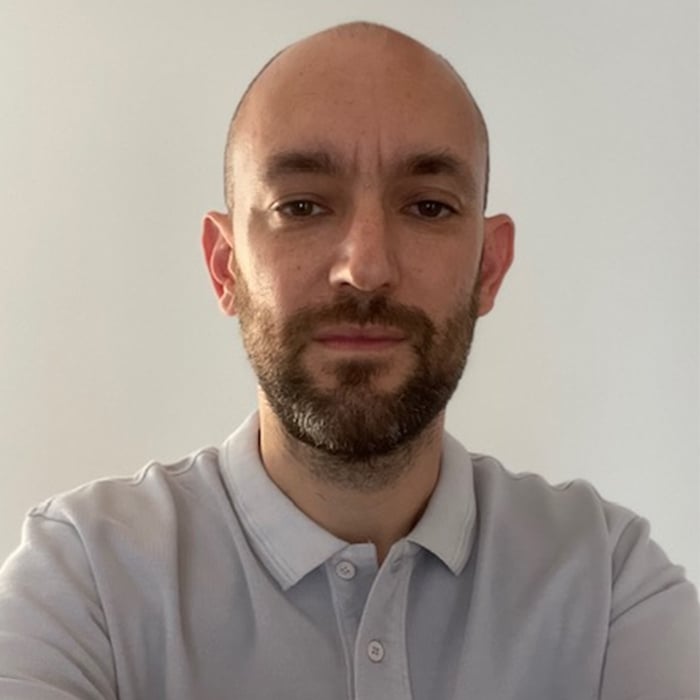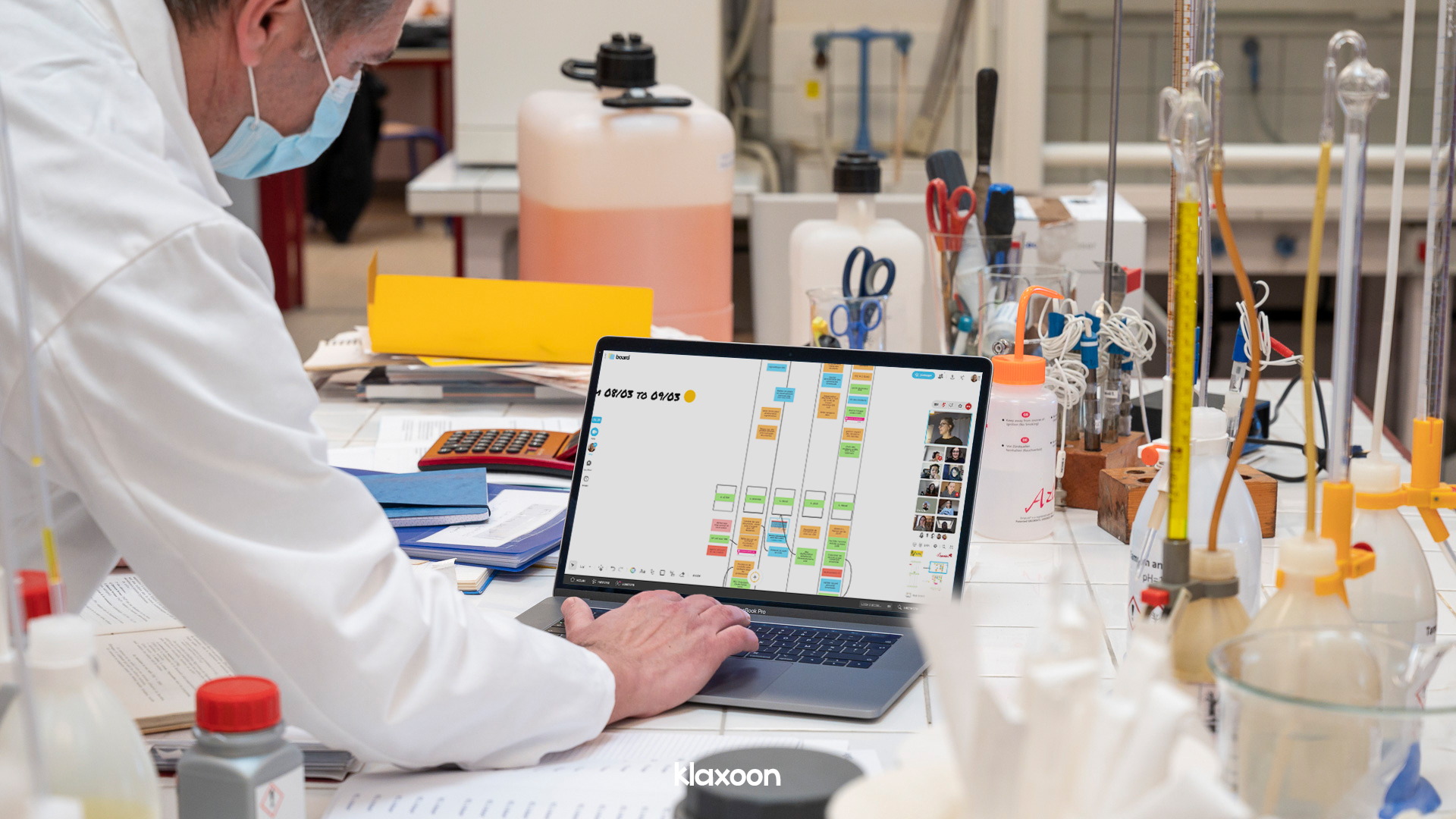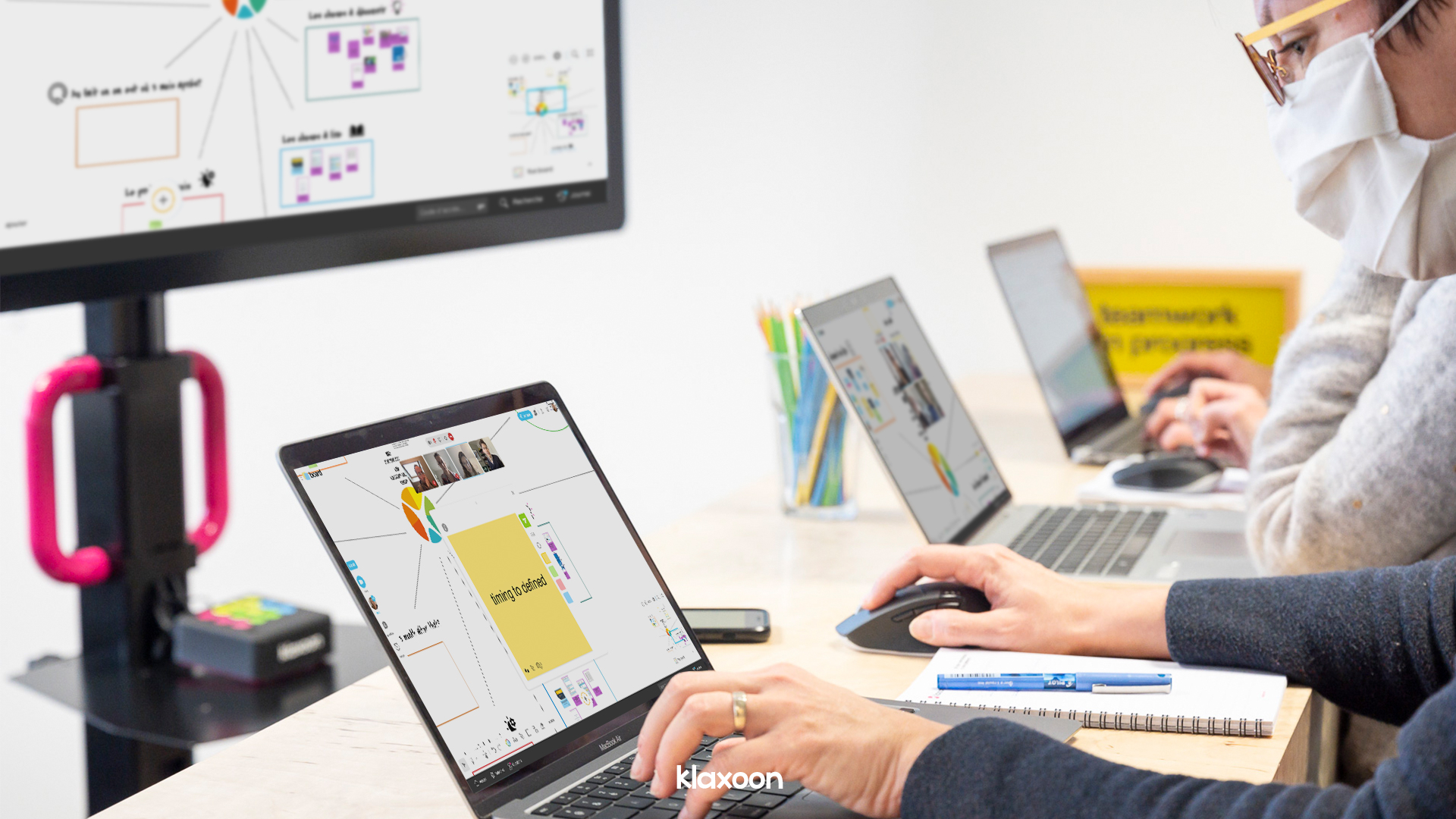How to increase efficiency through team rituals in the hospital sector
Published on February 14, 2025
How to increase efficiency through team rituals in the hospital sector

Hospital group Brocéliande Atlantique, Deputy Director
Erwan Privat is a deputy director of several hospitals in Brittany, France. He is in charge of operational management and strategy of the 500 beds in these hospitals, and has nearly 450 agents under his responsibility. Erwan was facing a problem: before, he could receive up to 150 emails a day. And then, Klaxoon appeared to make his daily life easier. Thanks to his interest in different management styles and agile methods, Erwan has set up team rituals to facilitate the work of all hospital staff, and create a team dynamic. He explains how he did so.
“As a deputy director within the Groupement Hospitalier Brocéliande Atlantique (GHBA), I am responsible for the strategic operational management of three different sites, and nearly 450 agents: nursing staff, administrative staff and health executives. One of my activities is therefore to optimize operations, to anticipate the needs of all, and especially to communicate better. Let’s not forget that the particularity of health institutions is they work in silos: medical, paramedical, administrative etc.
Shortly after my arrival in this position, the health care managers told me about some problems. Namely, the need to better communicate information. There was some misunderstanding about the decisions taken by the top management, and the difficulty for the health care managers themselves to report their operational and daily challenges.
My first observation, and I think it is common to many sectors, is that everyday, we are overwhelmed with emails. It's hard to sort all of them. Moreover, when we organize meetings, we notice that they are often too long, and not prepared enough.
In my work, I've always wanted to test new methods for facilitating and sharing information, especially to get out of this silo logic. So I decided to try Klaxoon to find solutions.
Faced with this problem of information management, we set up two team rituals with different groups.
Based on the Klaxoon Weekly template, it has only been slightly adapted to our way of working.
First, each team member brings up asynchronously on the Board the topics he is accountable for. He writes an idea and puts it in the column under his name on the Board. This first step is very important, because it allows the team to prepare and to make decisions right away during the 30 minutes. When the videoconference starts, we are ready to discuss.
From one week to the next, we follow the evolution of the topics and projects. To simplify understanding, we use a fairly classic color code. In green, we have the finished topics. In blue, those which are to be done. We use pink for the things that are worth noticing, and our favorites from past or future. In orange, we have what could raise some issues, and in red the urgent or blocking points to be tackled as soon as possible.
We keep the same Board from one week to another, which allows us to always have a view on the different subjects and to see their progress. We haveone column for each month, and each area stands for a week, so you can move from week to week.
If needed, anyone can make a reminder on a project. The Board support makes it very easy to exchange ideas, especially through the Question tool. Discussions take place directly on the Board, and all elements are easily accessible. Then, all the answers can be compiled.


This second meeting first appeared during the Covid crisis, when it was necessary to gain in daily coordination, to follow the actions and decisions of the health authorities, and to share the information as well and as quickly as possible. We chose to use Klaxoon Board because it was accessiblen and allowed us to manage everything live. The crisis is still not completely gone, but we have evolved and this ritual has become monthly with the approval of all teams. We call it "the coordination unit". It is a review of the month and the topics for all the hospitals and professions: nursing staff, paramedical staff, administrative staff and logistics staff.


From a qualitative point of view and on a personal level, the first benefit comes from the way I facilitate these rituals. These team moments allow me to modernize my function and my way of working.
It is a transformation that also affects the entire management team: the doctors, the health managers. I see more collegiality and sharing than before.
The teams are obviously more involved. They are more solicited, more engaged. And by sharing our decisions with the teams, we boost their confidence in themselves and in management.
With the support of the Board and these recurring rituals, we are sharing and being transparent. Everyone sees what the colleague can do and what I can do. This breaks certain codes that are in place in the hospital environment, such as the silo logic mentioned above.
From a quantitative point of view, the time we save is considerable. Personally, the support and the fact that the information remains accessible means that I don't have to write reports. And for all the teams, we meet our deadlines. In my opinion, this is proof of an efficient organization.
Another benefit of the tool is the introduction of asynchronous work in our operating modes.
In terms of preparation, it allows us to bring up elements, questions and ideas before the meeting, of course. The participants can also exchange with each other. We notice that our decision-making is greatly facilitated by this knowledge of the subjects.
But working asynchronously is also about ease to come back on documents or ideas after the weekly meeting. A real plus for sharing information at any time!
In short, we share better, more simply and more efficiently. Now that these rituals have been adopted, we can even change the way they are conducted. I often leave my position as a director to let other people speak and lead. These are interesting changes to make. And it's a real lever for participation.”
I see more collegiality and sharing than there was before.
Unlock your teamwork potential